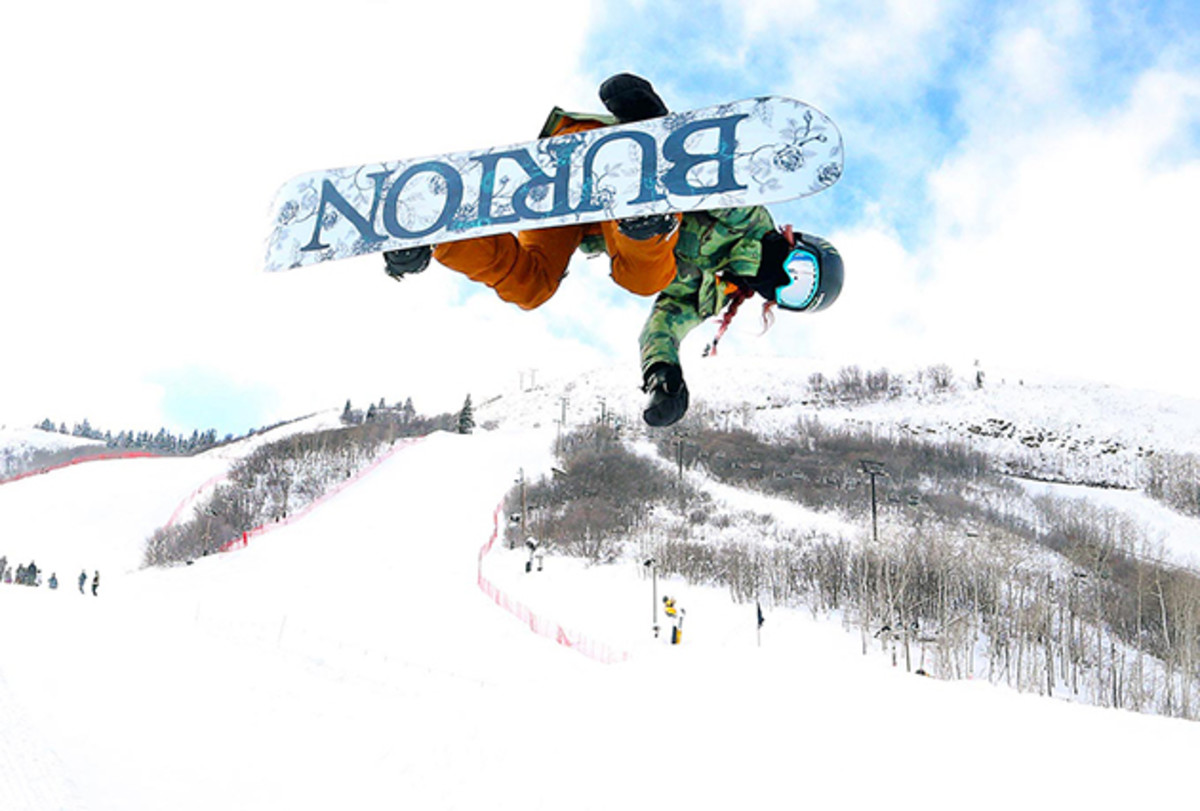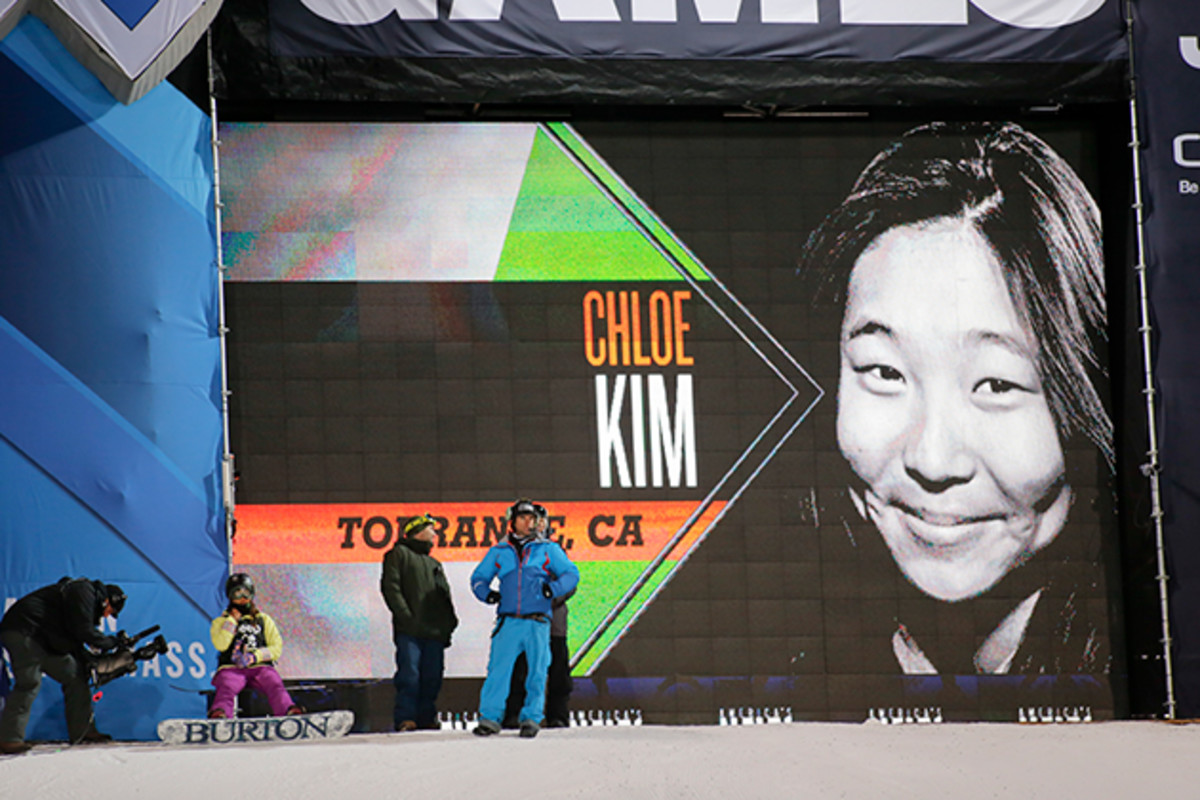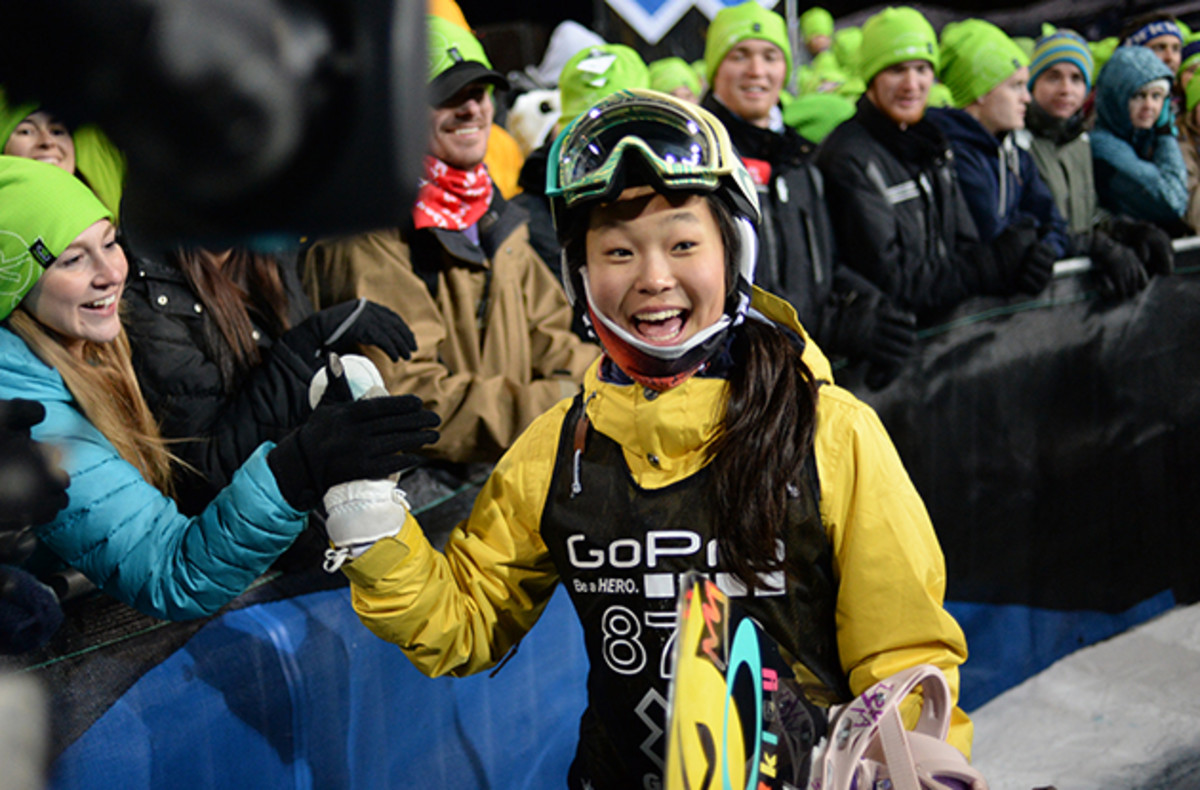Queen of the Snow: Chloe Kim looks to rule snowboarding for years to come

Chloe Kim can soar. She can maintain a gymnast’s grace and poise while she spins 720, 900, even 1080 degrees on her snowboard—often at heights close to 14 feet above the 22-foot walls of the icy halfpipe.
Before she can reach those heights, though, before she can continue to elevate her sport, or before she can post 90-point scores, Kim requires some assistance to reach Mammoth Mountain—her primary training ground. Every time she makes the five-mile drive to Mammoth from the condo her family rents for two weeks in the winter and two months in the spring, Chloe’s father, Jong Jin Kim, is with her. Chloe welcomes the company in the white Subaru Outback, but it is also a necessity.
Those are the realities when you’re a 15-year-old high school sophomore from Torrance, Calif. Even if you’re the youngest gold medalist in Winter X Games history.
Kim obtained her driving permit on Nov. 9, 2015. Although it seems as if she has raced through the transition from prodigy to queen of the mountain faster than one of her runs weaving down Mammoth’s 550-foot halfpipe, she still must wait until April to take the test for her provisional driver’s license.
But despite Chloe Kim’s youth, despite what her coaches term her “phenomenally quick” ability to learn new tricks, her story is not one of overnight success.
“It has taken a long time and a lot of work,” Jong Kim, says.
***
Chloe Kim doesn’t recall all of the specifics surrounding her initiation into the sport that she now headlines. But one thing is certain: Her first impressions did not last.
X Games Aspen Preview: Stars of the slopes and pipe go all-out for gold
“I definitely didn’t like it at the beginning,” Kim says. “Probably because I was four and it was cold out.”
Jong Jin Kim had brought his youngest of three daughters with him to Mountain High Resort, less than an hour and a half drive from the Kims’ home in La Palma, Calif. They would learn how to snowboard together. His reasoning? Persuade his wife, BoranYun Kim, who didn’t have the same interest in snowboarding, to join him by having Chloe tag along.
“My dad definitely dragged me into the sport,” Chloe Kim says with a laugh.
Soon, she didn’t need any persuading to travel to the slopes. She entered her first contest when she was six. She was immediately drawn to the competitive side of the sport. She went to the junior nationals the next year. She won.
Yet, Kim’s parents, who both emigrated from South Korea to the United States, and first met in Switzerland, strove to expand their youngest daughter’s worldview and horizons from an early age.
For the time she was in the third and fourth grade, Kim lived with her aunt in Geneva, Switzerland. She learned French. She made friends. Since the school Kim attended was off every Wednesday, when her father visited her they’d travel to a halfpipe at the Avoriaz resort in France.
During one of Jong Kim’s trips to Switzerland, he got to watch Soko Yamaoka, the professional from Japan who had placed 10th in the 2006 Winter Olympics in Turin, in action. His response was not one of awe, but rather of revelation. His daughter could reach that level. His daughter could eventually reach the Olympics. Chloe was eight.
After Kim returned to California when she was 10, her father committed to help her achieve that Olympic goal. He had immigrated to the United States in 1982, when he was 26, to pursue a degree in engineering at California State University, Long Beach.
Now, he wanted to make sure that his daughter did not squander her opportunity.
So he quit his job in engineering. He would drive Chloe the 350 miles each way to Mammoth every weekend during the snow season, so she could practice with the Mammoth Snowboard Team and receive instruction from Ben Wisner, the director of snowboard and freeski teams at Mammoth.
Freeskiing's first family: Three Wells brothers will vie for X Games gold
“I wanted to be there so I could help her right away,” Jong says.
“He doesn’t miss a run,” Mike Jankowski, the head coach of the U.S. Olympic Snowboarding & Freeskiing Teams, says. “He is always there to support Chloe and guide her.”
When Jong wasn’t waiting at the bottom of the halfpipe, he was taking her skateboarding at the Vans Indoor Park in Orange, Calif.
“That is her [Kim’s] foundation,” says Jankowski, who also calls her background background “priceless” and the “best crossover” to snowboarding. “You can really tell when someone has that touch on the snow with the way they approach the mountain and attack the mountain. Chloe has that.”
Still, Kim’s style and consistent wins in her age group did not immediately transfer to the professional ranks. Her idols, like Kelly Clark and Torah Bright, were now her competition. At Kim’s first Burton U.S. Open of Snowboarding in 2012, she finished 19th. The next year, she placed 12th, matching her age, and made the final.

But it wasn’t until Kim earned a series of podium finishes at the qualifying events for the U.S. women’s Olympic halfpipe team that she established her presence as a top contender. Kim earned a spot on the U.S. Women’s Olympic Halfpipe Team for 2014, but she did not compete in Sochi. She was too young. Since the Olympics require all athletes to be 15 by the end of the year preceding the games, Kim, at just 13, was ineligible.
“It wasn’t a crazy disappointment,” says Kim, who further demonstrated her credentials against the sport’s top athletes at the 2014 Winter X Games Superpipe competition. Kim scored a 94.33, and edged out Kaitlyn Farrington—the eventual 2014 Olympic gold medalist—for silver.
So instead of traveling to Sochi, the Kims visited family in South Korea. In two years they’ll likely return for more than a vacation. Pyeongchang, South Korea, is the site of the 2018 Winter Olympics.
Jong Kim doesn’t regret that his daughter must wait till 2018 to make her debut at the Olympics. “If there isn’t [an age limit] some parents might push their kids too hard into dangerous situations for money or other reasons,” he says. “We wanted Chloe to choose for herself.”
For SnoCross superstar Tucker Hibbert, success is all in the details
), she still has a monthly allowance.
She also prefers glitzy nail polish. She seems to be constantly experimenting with her hair color—whether there are hues of dark purple, red, pink, or blue. She posts such tweets as, “I think I am becoming a Belieber.” She has a notorious sweet tooth and has a lifetime supply of Skittles.
“She is a little more mature, her hair is a little punk rock and her outfits are more her personal style,” Wisner says. “But she is still the same Chloe.”
“She is a pretty grounded girl,” Wisner adds. “Her dad and mum were never in a hurry to push her into events, but she has kept progressing and moving up and up to bigger events. She’s moving faster than I had even thought possible.”
The only thing that has seemed to hold her back are the physical realities of her sport. Injuries are almost a given as action sports athletes continue to push the boundaries of progression. Kim’ career has been no exception. She has had a laundry list of injuries, most from riding slopestyle. She separated her shoulder. She broke her thumb and her arm. She hyperextended her knee.

“We understand the risks,” Jong Jin says. “We are very aware.”
When at Mammoth, Wisner says he constantly monitors Kim’s energy levels to see if she needs a break. “Chloe is a very determined young girl and a very young girl,” he says. “In practice, you have to hold her back. She is taking these big adult slams, but she always wants to try again.”
Still, Kim says her hardest crash occurred in the halfpipe on the same night as her most triumphant moment. It was a cold night in late January at last year’s X Games. There was less than 10 minutes until the start of the Superpipe final, but Kim wanted one more run. Everything went according to plan—switch method air, cab 900, switch backside 720. On the final trick—a frontside 900—she completed the rotation, but bobbled (her word). She smashed onto the top of the coping, flipped and then skidded down the 22-foot wall of the pipe. The impact chipped one of her teeth.
Behind the Trick: Yuki Kadono on his back-to-back Triple Cork 1620
could see that Kim was “obviously shaken” and in “some real pain.”
Once Kim passed the concussion testing and said she felt fine, though, Janowski never doubted her ability to land another gold medal run.
“Beneath all the smiles and the positive vibes, Chloe is definitely a fierce competitor inside,” he says. “She wanted to get redemption on that pipe.”
She did. While her legs were shaking as she prepared for her first run, Kim didn’t alter her plan. “I did everything pretty much the same,” she says. “Just with a different mindset.”
On her third run, it was good enough for gold. She stopped the frontside 900. Kim unseated Clark from the top of the podium, with a score of 92.00 against Clark’s 90.00.
“I mean my face kind of hurts right now,” Kim said during the post-run interview—sporting a Band-Aid on her left cheek, reminiscent of the rapper Nelly. “I am just so amazed that I was able to land all of that.”
Clark, who was the only rider to attempt and land a 1080, did not seem dismayed about the judging, or about the silver medal instead of the gold, which would have been her eighth.
She was the first person to congratulate Kim.

It would be easy to cast Kim and Clark, 32, as rivals, and their dominance of the sport is sure to be one of the top story lines this weekend at the X Games. Youth versus experience. Newcomer against the established guard. When Clark won the Olympic gold medal at Salt Lake City in 2002, she was 18. Kim was a year old.
But if you’re looking for tension, look elsewhere. Clark hates the word rivalry. Kim has called Clark a mentor and her inspiration. They spray each other with champagne, or in Kim’s case apple cider, on the podium. The two even take selfies together, like in December on the chairlift up to the halfpipe at Breckenridge, and post them on Instagram.
“I love seeing young women coming up and following in my footsteps,” Clark says. “I hope they’ll eventually stand on my shoulders and take our sport even further.”
Clark, though, is not ready to concede her top spot just yet. This will be her 17th consecutive X Games, and she calls it a “building year.” Next year will be a “polish year.” Like Kim, the three-time Olympic medalist has her sights set on Pyeongchang in 2018. But Clark, the most decorated athlete in women’s snowboarding, says that if winning was her only motivation she would have stopped competing a long time ago. She has won plenty, including last weekend at the Mammoth Grand Prix. Kim finished second.
“There will be some back and forth over the next few years,” says Dave Driscoll, Global Director of Team at Burton Snowboards. “I think it is a little too early to call it a changing of the guard.”
